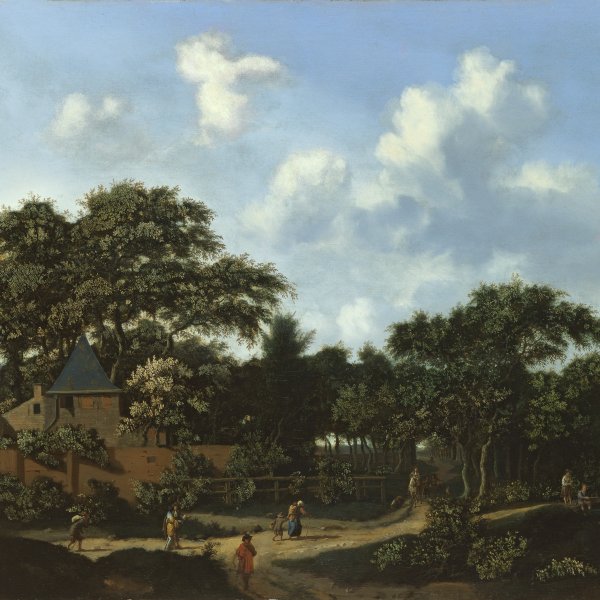Jan Jansz. van der Heyden
Gorinchem, 1637-Amsterdam, 1712
Jan Jansz. van der Heyden was born in Gorinchem, Flanders. He first trained in his native city with a local painter who specialised in stained-glass painting. In 1650 he moved with his family to Amsterdam where his father died that year. Van der Heyden started painting in 1660 although no works from prior to 1664 are known. In 1661 he married Sara ter Hiel from Utrecht. Van der Heyden never devoted himself exclusively to painting and was better known in his own day as an inventor and engineer. He designed and implemented a complex system of lighting for the streets of Amsterdam that was used from 1669 until 1840 and which was also adopted by other Dutch cities and even used abroad. Together with his brother Nicolaes van der Heyden, the artist invented a pump mechanism for putting out fires that considerably improved existing equipment. Years later, in 1690, he and his son published an extensive manual on different fire-fighting procedures.
As a painter Van der Heyden is known as one of the first Dutch painters of urban views, compositions in which the depiction of architectural motifs prevail. He also painted views of streets, country houses and landscapes, of which at least two are painted on glass. Van der Heyden’s work indicates that he travelled around the south of Holland and the Rhineland area. His paintings are notable for the precision with which the architectural elements are depicted. On occasions he worked with Adriaen van de Velde or Johannes Lingelbach, who painted the secondary figures in his landscapes. At the end of his career Van der Heyden introduced still lifes into his repertoire. He died in Amsterdam in 1712, leaving behind a sizeable estate and a collection of more than seventy paintings. He had no pupils or direct followers but was extremely influential for mid-18th-century urban view painting.
As a painter Van der Heyden is known as one of the first Dutch painters of urban views, compositions in which the depiction of architectural motifs prevail. He also painted views of streets, country houses and landscapes, of which at least two are painted on glass. Van der Heyden’s work indicates that he travelled around the south of Holland and the Rhineland area. His paintings are notable for the precision with which the architectural elements are depicted. On occasions he worked with Adriaen van de Velde or Johannes Lingelbach, who painted the secondary figures in his landscapes. At the end of his career Van der Heyden introduced still lifes into his repertoire. He died in Amsterdam in 1712, leaving behind a sizeable estate and a collection of more than seventy paintings. He had no pupils or direct followers but was extremely influential for mid-18th-century urban view painting.






